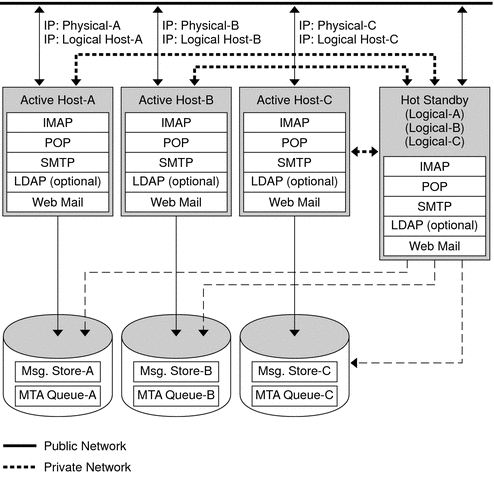3.2.3 N+1 (N Over 1)
The N + 1 or "N over 1" model operates in a multi-node asymmetrical configuration. N logical host names and N shared disk arrays are required. A single backup node is reserved as a hot standby for all the other nodes. The backup node is capable of concurrently running Messaging Server from the N nodes.
The figure below illustrates the basic N + 1 high availability model.
Figure 3–3 N + 1 High Availability Mode

Upon failover of one or more active nodes, the backup node picks up the failing node's responsibilities.
The advantages of the N + 1 model are that the server load can be distributed to multiple nodes and that only one backup node is necessary to sustain all the possible node failures. Thus, the machine idle ratio is 1/N as opposed to 1/1, as is the case in a single asymmetric model.
To configure an N+1 model, you need to install binaries only on the local disks (that is, not shared disks as with the symmetric model). The current Messaging Server installation and setup process forces you to put the binaries on the shared disk for any symmetric, 1+1, or N+1 asymmetrical or symmetrical HA solution.
- © 2010, Oracle Corporation and/or its affiliates
